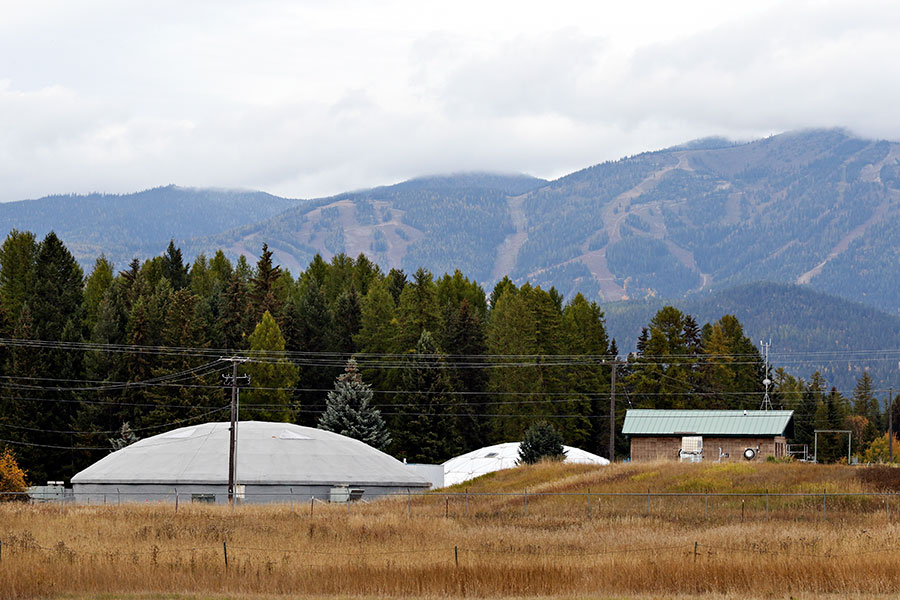Water and sewer rates will increase in Whitefish this fall following city council’s reluctant decision to approve a controversial motion amid the rising costs of service that has not aligned with the current rate structure for years.
In a 4-1 vote, the Whitefish City Council voted Oct. 1 to raise the rates, following recommendations included in a 2016 assessment designed to better align the amount residents pay with the city’s operational costs, which are among the highest in the state.
Councilors Richard Hildner, who made the motion to approve, and Andy Feury both said their decisions were based on necessity and not driven by profit. Feury assured community members that the uptick in rates does not benefit the city’s coffers, but rather barely cover its costs of water and wastewater services, which are among the highest in the state because Whitefish derives its water from surface water.
“My ox is getting gored harder than anyone in the room because I’m at the highest rate and I don’t use much water, about 3,000 gallons a month, and my sewer bill is going to be $1,460 a year. Just for sewer. By 2026, I am going to pay over $2,000 a year. And that’s a lot of money,” Feury said. “But I do understand that we need to charge for systems that cost more money to maintain if it takes more energy and more mechanical equipment for repairs and everything. We don’t make money off this. We operate on it. It’s not like this is a profit center for us. It’s frustrating but there’s not a lot we can do.”
Customers inside city limits with a 5/8” meter, located in service class SC-1, with usage of 4,000 gallons of water and wastewater per month will see a rate increase as follows:
Monthly domestic water costs are slated to increase by .73 percent, or approximately $.30, from $41.08 to $41.38. Monthly wastewater costs will increase $13.9 percent, or approximately $6.23, from $44.66 to $50.89. Customers with a landscape/irrigation meter with usage of 10,000 gallons per month would see a 4.9 percent rate increase in monthly irrigation costs, from $42.80 to $44.90.
The city of Whitefish provides water service to about 3,250 residential customers and 320 commercial customers within the city limits. It also provides service to 68 residential and seven commercial customers outside the city limits. Wastewater service is provided to about 3,530 customers in the city and about 106 outside the city.
Public Works Director Craig Workman said Whitefish’s water rates are higher than neighboring communities like Kalispell, Columbia Falls and Evergreen because its drinking water is derived from surface water, which requires a more elaborate treatment process, requires more capital costs, additional staff, and different treatment chemicals.
Because of this process, Whitefish has among the highest rates for water and sewer in the state, and is taking on additional debt associated with planned upgrades to its wastewater facility, anticipated to cost between $15 million and $20 million, according to Workman, with the hope that it will make the system more efficient and cost effective in the future.
The city also distinguishes wastewater user types and service zones, with different rates applied to three separate service classes — SC-1, SC-2 and SC-3 — in addition to the dedicated rates associated with providing service to Grinder and septic-tank effluent pump systems.
Residents living near Whitefish Lake, for example, pay the highest rates for sewer, an inequity that rankled councilor Frank Sweeney, the lone representative to vote against the rate increases. He said the entire community has a vested interest in incentivizing residents to be on sewer, and everyone should help shoulder the costs.
“I think we as a community should collectively share that cost because we as a community want it,” Sweeney said. “I understand that there is no magic bullet, but I still challenge the equity of it.”
Mayor John Muhlfeld noted that when the city began its campaign to furnish protections through a conservation easement on Haskill Basin, from which the city derives its municipal water supply, due to mounting pressures from higher development, it noted the catastrophic consequences that a hypothetical contamination could have on its water rates.
“When we looked at a scenario where we essentially lost our Haskill Basin water source due to contamination, hypothetically, and went to a purely lake-water only scenario, that additional cost to the city would have been on the order of about $500,000 a year, which would have translated to $140 per residential unit in town,” Muhlfeld said. “I am not happy that the rates are going up like they’re forecasted to, but we are looking out and we are tying to take proactive measures to mitigate the impacts to our users.”
Still, Whitefish resident Sue Malletta said the city’s water rates were outrageous, and urged community leaders to devise other mechanisms to cover operational costs, drawing their attention to the city’s exorbitant base rates when compared to neighboring communities.
“In my mind these base rates for Whitefish residents are really outrageous. Why should we as Whitefish residents be paying 400 percent higher than our neighbors?” she said. “I’m paying $921 yearly for base water and sewer rates combined before even a glass of water is drawn or a toilet flushed.”
“I propose you take a serious look at this before you once again raise our rates,” she continued. “I’m confident that our competent council members and staff can devise other ways of raising money for new facilities rather than raising rates on our necessary water and sewer.”
